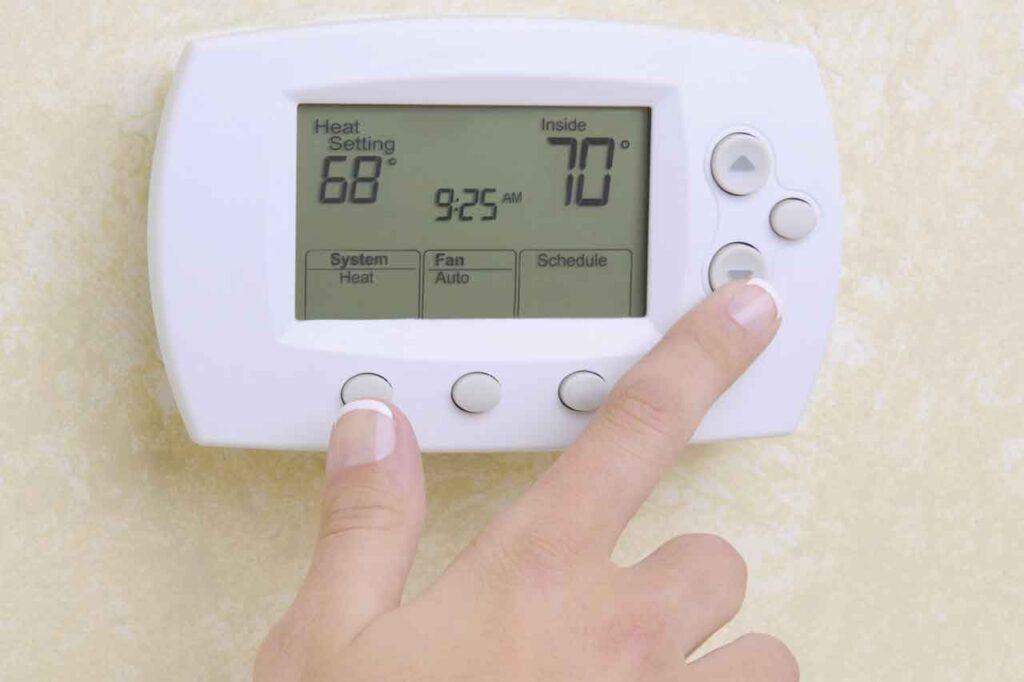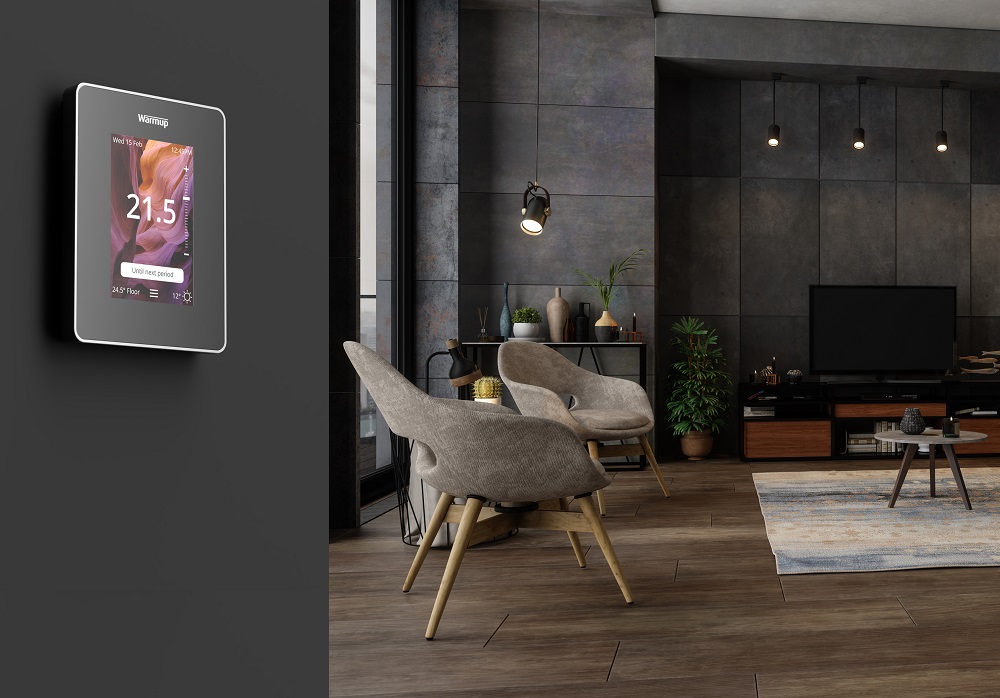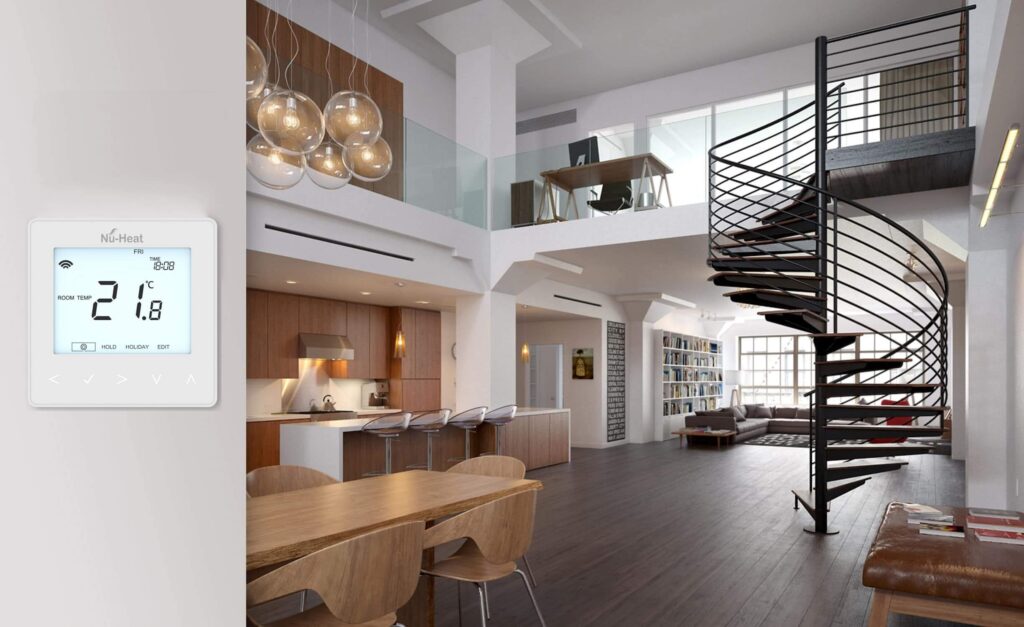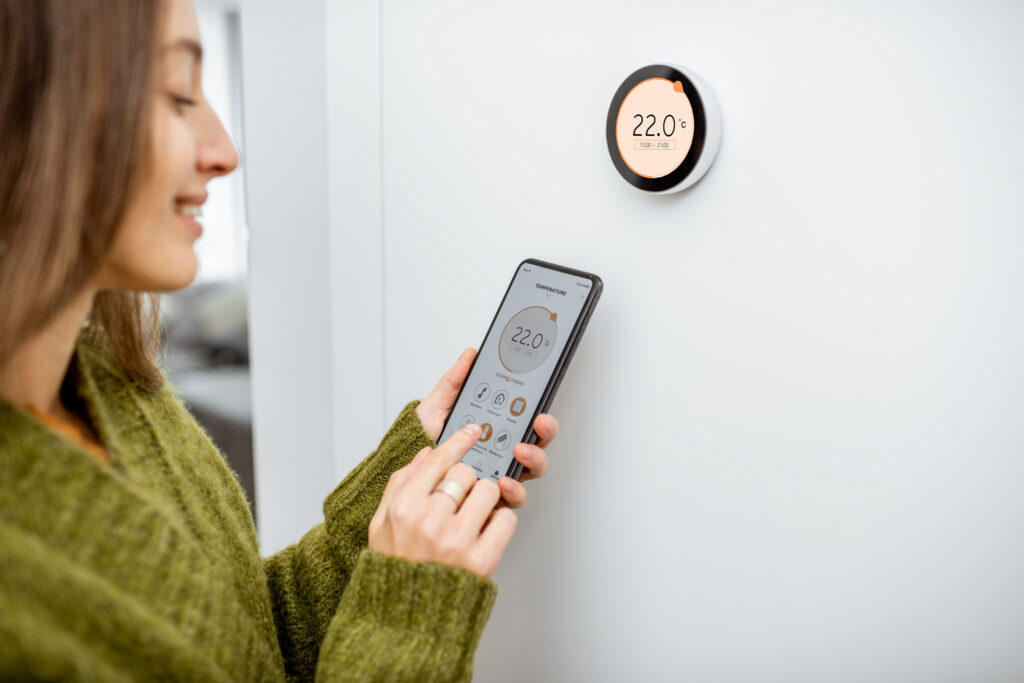At first glance on the wall or shelf, there is a gadget that hides a huge power of practical functionality. We are, of course, talking about room controllers, also known as thermostats. It’s worth knowing how to use them properly to ensure warmth around the clock.
Thermostat setting modes
Each of the room controllers gives us the ability to control the heating in the rooms. The controllers are designed to minimize your interference with the combustion process. With them, you can set different temperatures in separate rooms. Few people read the instruction manual and intuitively set the thermostat, overlooking the many useful functions that significantly facilitate the process of heating the room.
We also recommend reading the article on how to set nest thermostat to hold temperature.
Manual mode- constant temperature throughout the day

Source: justradiators.co.uk
Room controllers are improved versions of traditional thermostats that were manually set by the user. Nowadays, they are adapted to operate in various modes that allow to increase thermal comfort and reduce heat loss.
In manual mode, the temperature is set directly by the user. It applies 24 hours a day regardless of the time and time and the prevailing outdoor conditions. The temperature will change only when the settings on the controller are changed manually.
Thermostats are often available in wireless and wired versions, depending on user preference.
Day/night mode-two-mode operation
The day/night mode thermostat is based on operating on two temperature values. These are referred to as day and night temperatures. The user of the room controller must set the corresponding temperatures for day and night, and specify the times when the controller changes the temperature from day to night mode and vice versa. Many controllers allow you to set the temperature from 5 to 35°C. This allows the room to be adequately heated and cooled to the temperature required by the user. Some thermostats regulate the temperature with an accuracy of 0.1°C.
Weekly mode- each day of the week a different temperature
Weekly mode ensures that the heating of a house or apartment is precisely scheduled according to the day and time. Simply select the day, then the time interval and the temperature.
Some thermostats with color and touch screens have the ability to program the temperature according to the day and time. The user can determine exactly on which days of the week and at what times the temperature will increase or decrease.
With the help of weekly control, you can significantly reduce the costs associated with heating a house or apartment and ensure thermal comfort for yourself and loved ones around the clock. In order for the thermostat in weekly mode to work properly, it is important to correctly set the current date and time on the controller. With the help of the correct data, the operation of the controller is synchronized throughout the week.
Vacation mode and events

Source: warmup.co.uk
When planning a family reunion, it’s also important to make sure the room is at the right temperature. Hot dishes on the table or lit candles cause the temperature to rise and become unbearable over time. Usually, in such cases, we open the window and ventilate the room by letting in the fresh air. Warm air escapes from the room.
In such cases, it is a good idea to turn on the party mode, which was previously set on the thermostat. The temperature indicated by the user will be maintained at all times.
In the event that you go on vacation or do not stay at home for a long time, it is worth setting the vacation mode on the thermostat. As with the party mode, the room will maintain the set temperature until the mode ends.
Antifreeze mode
In winter, when the temperature outside drops below 0°C and we are planning an extended trip, it is worth thinking about increasing the indoor temperature from time to time so as not to damage the entire heating system. This is what the antifreeze mode is used for.
Antifreeze mode involves maintaining a low-temperature value, which is set for the entire period of our trip. This mode allows you to set a low temperature that will last for the entire time and protect the heating system from freezing.
Errors when using thermostats
Energy losses very often result from user errors. Even if there is a state-of-the-art thermostat in the house and our knowledge of how to use it is inadequate, we can expect high costs associated with heating the house or apartment. The most common mistakes are the same ones made by most users.
Set one temperature for each room around the clock

Source: nu-heat.co.uk
For a sense of thermal comfort, you need to set the right temperature. Many thermostat users overheat rooms by setting the temperature too high, which leads to overheating. This also leads to a poor feeling of well-being, as well as wasting a lot of heating energy. Varying temperatures allow you to maintain the right temperature in each room. According to research, setting a single temperature for all rooms at all times of the day and night results in a room that is too hot when it is empty and will be too cold when there are household members in the room. The thermostat is intended to provide thermal comfort when there are household members in the house and to save money when it is standing empty.
Increase indoor temperature when it gets colder outside
Many users turn up the room temperature as soon as it gets colder outside, the wind blows or it rains. Unfortunately, this only wastes heat energy, as the thermostat maintains a constant temperature regardless of weather conditions and the outside temperature. So changing the settings and temperature of the room with the thermostat is unnecessary, because we will have the temperature we set for ourselves beforehand.
Set the maximum temperature to heat the house quickly
When returning home from a long trip or work to a cool room, users often raise the temperature to the maximum to warm it up. This is because many thermostat users compare it to driving a car. The harder you press the gas pedal, the faster the car goes. Unfortunately, this is not the case. When you increase the temperature, the room does not heat up faster. It causes the apartment to heat up to a higher temperature and maintain it. The thermostat does not control the speed of heating but strives to achieve the desired temperature. So rapidly increasing the temperature on the thermostat will not have the desired effect, and may end up overheating the room.
Turn off the heating completely before leaving for work or a trip

Source: homebuilding.co.uk
Many thermostat users who go on a long trips turn off the heating. This is not the best idea, as the indoor temperature will drop to too low a level. This can further lead to mold, moisture, and cracks on the walls or ceiling. In addition, heating cooled rooms will lead to increased costs.
Working on factory settings for fear of upsetting the device
Many users of thermostats believe that their operation is too complicated, so they only heat the house using the factory settings. In reality, this is not difficult and can save up to 15% of energy. Many thermostats can also be controlled via an app on your phone from anywhere, allowing you to heat your home just before you arrive. This allows you to offset heating costs and return to a warm apartment.
Proper heating of an apartment or house saves on the amount of energy consumption. Modern heating controllers can be programmed according to budget and thermal comfort. Therefore, it is worth reading the instruction manual or using the help of professionals from the company Ewol from Szczecin. They will set the thermostat according to your needs, as well as teach you how to use it yourself.



